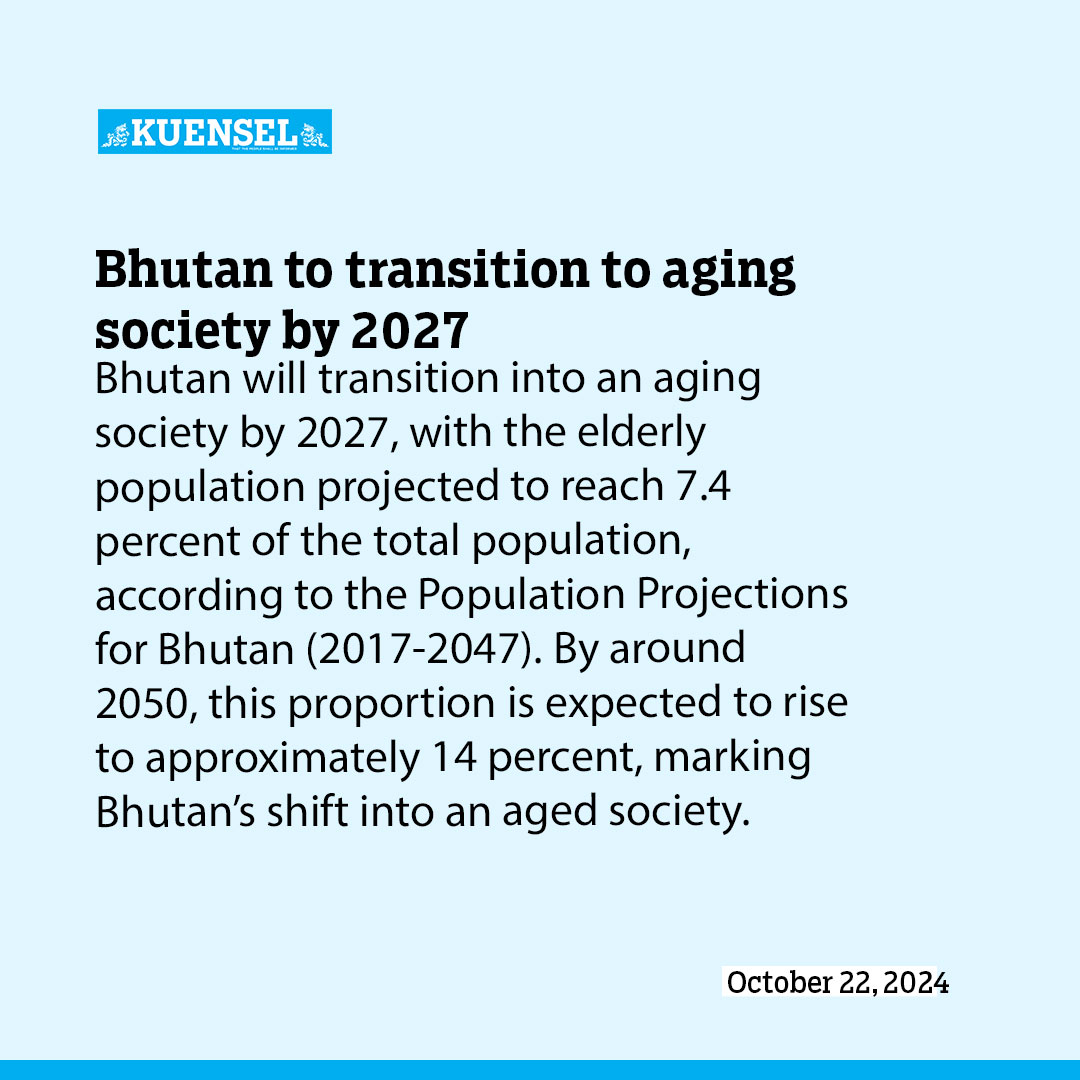Experts say strategic policy response required to address this demographic shift
Sherab Lhamo
Bhutan will transition into an aging society by 2027, with the elderly population projected to reach 7.4 percent of the total population, according to the Population Projections for Bhutan (2017-2047).
By around 2050, this proportion is expected to rise to approximately 14 percent, marking Bhutan’s shift into an aged society.
This information was highlighted during a three-day workshop organised by the United Nations Population Fund (UNFPA) in collaboration with the Journalists’ Association of Bhutan (JAB) as part of the 16 Days of Activism Against Gender-Based Violence campaign. This annual international initiative runs from November 25, International Day for the Elimination of Violence against Women, to December 10, Human Rights Day.
A Data Analyst with UNFPA, Cheda Jamtsho, explained that an aging society is defined as one where 7 percent or more of the population is aged 65 and older.
Bhutan’s elderly population is projected to grow significantly, from 43,064 individuals in 2017 to 118,650 by 2047—an increase of 58.2 percent over the next 30 years.
The rise in the elderly population will bring both challenges and opportunities for the country,” Cheda Jamtsho said. “Increased demand for healthcare services tailored to older adults will be essential, including improved access to geriatric care and preventive health services.”
He added that there will also be a pressing need for enhanced social services, such as retirement support and community programmes.
As workforce demographics shift due to retirement, policies surrounding pensions and labour may require updates to ensure their sustainability.
To effectively manage these changes, Cheda Jamtsho emphasised the need for clear strategies and action plans focused on aging policy, advocating for a life cycle approach. “This means considering the needs of individuals at every stage of life, ensuring that policies and programmes promote healthy ageing and encourage active participation in society.”
The UNFPA shared that between 1974 and 2024, the worldwide share of people aged 65 almost doubled—increasing from 5.5 per cent to 10.3 percent. At the global level, population ageing is attributed to improvements in life expectancy and fall in fertility rates across many countries.
In terms of policies and strategies, Cheda Jamtsho said the most successful strategies offer a full range of support to help families make informed choices which includes things like paid parental leave, affordable childcare, flexible work options, good healthcare and education, and promoting equal sharing of parenting duties.
“The best policies allow people to freely choose if, when, and how many children to have, without feeling pressured, creating an environment that supports families through social, economic, and gender-equal policies,” said Cheda Jamtsho.
He added that Bhutan could facilitate families in having a third child by creating supportive conditions rather than merely offering financial incentives.
“Fertility is not just about numbers, it is about creating the right conditions where people have the freedom and support to choose when and how to have children and to raise them in a nurturing environment,” said Cheda Jamtsho.
He cited the example of South Korea’s struggle with declining birth rates despite significant government spending—around USD 280 billion over 18 years—mostly on cash handouts. He said that these measures may not address underlying issues such as high living costs and quality of life.


